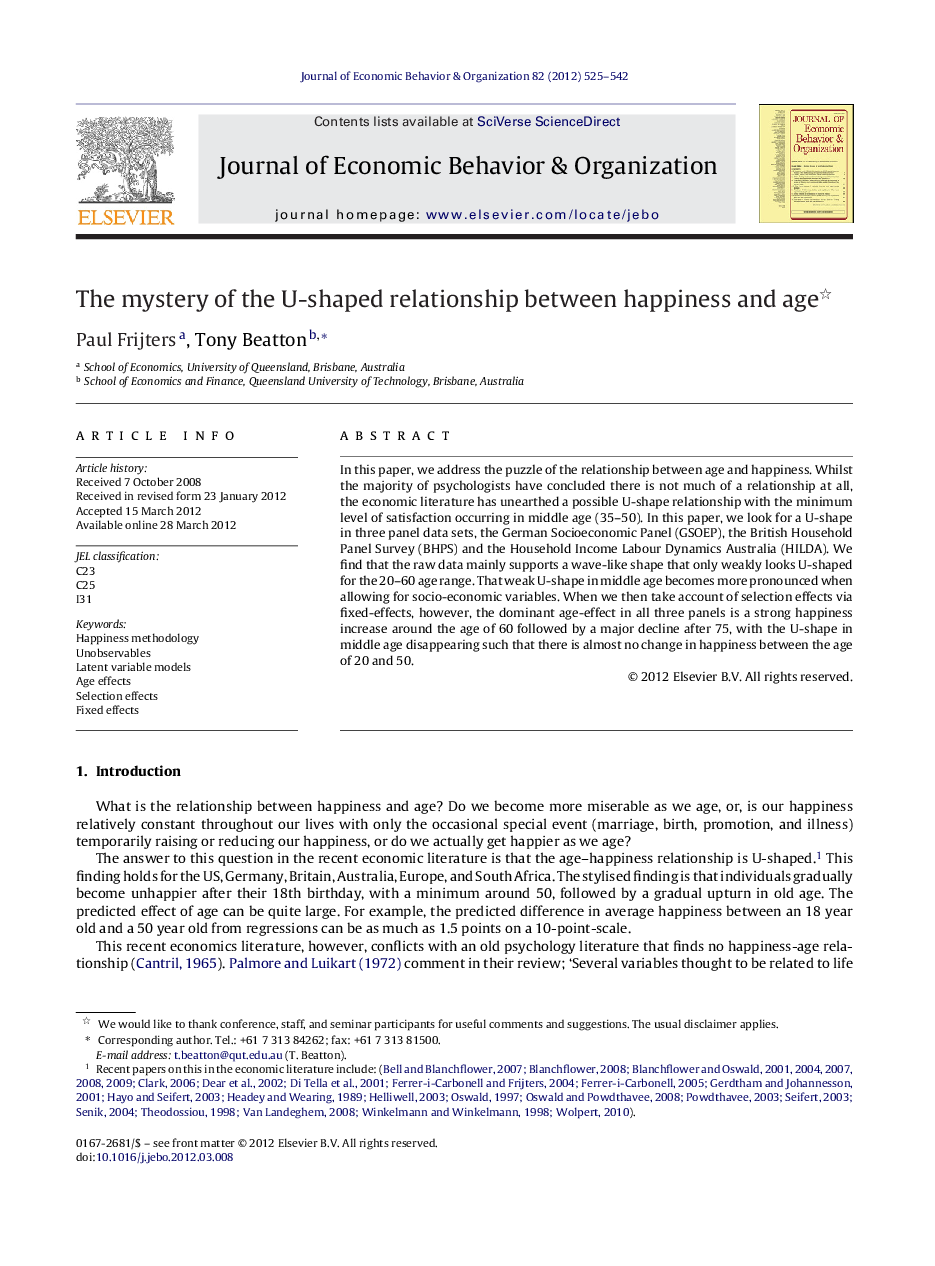| Article ID | Journal | Published Year | Pages | File Type |
|---|---|---|---|---|
| 883788 | Journal of Economic Behavior & Organization | 2012 | 18 Pages |
In this paper, we address the puzzle of the relationship between age and happiness. Whilst the majority of psychologists have concluded there is not much of a relationship at all, the economic literature has unearthed a possible U-shape relationship with the minimum level of satisfaction occurring in middle age (35–50). In this paper, we look for a U-shape in three panel data sets, the German Socioeconomic Panel (GSOEP), the British Household Panel Survey (BHPS) and the Household Income Labour Dynamics Australia (HILDA). We find that the raw data mainly supports a wave-like shape that only weakly looks U-shaped for the 20–60 age range. That weak U-shape in middle age becomes more pronounced when allowing for socio-economic variables. When we then take account of selection effects via fixed-effects, however, the dominant age-effect in all three panels is a strong happiness increase around the age of 60 followed by a major decline after 75, with the U-shape in middle age disappearing such that there is almost no change in happiness between the age of 20 and 50.
